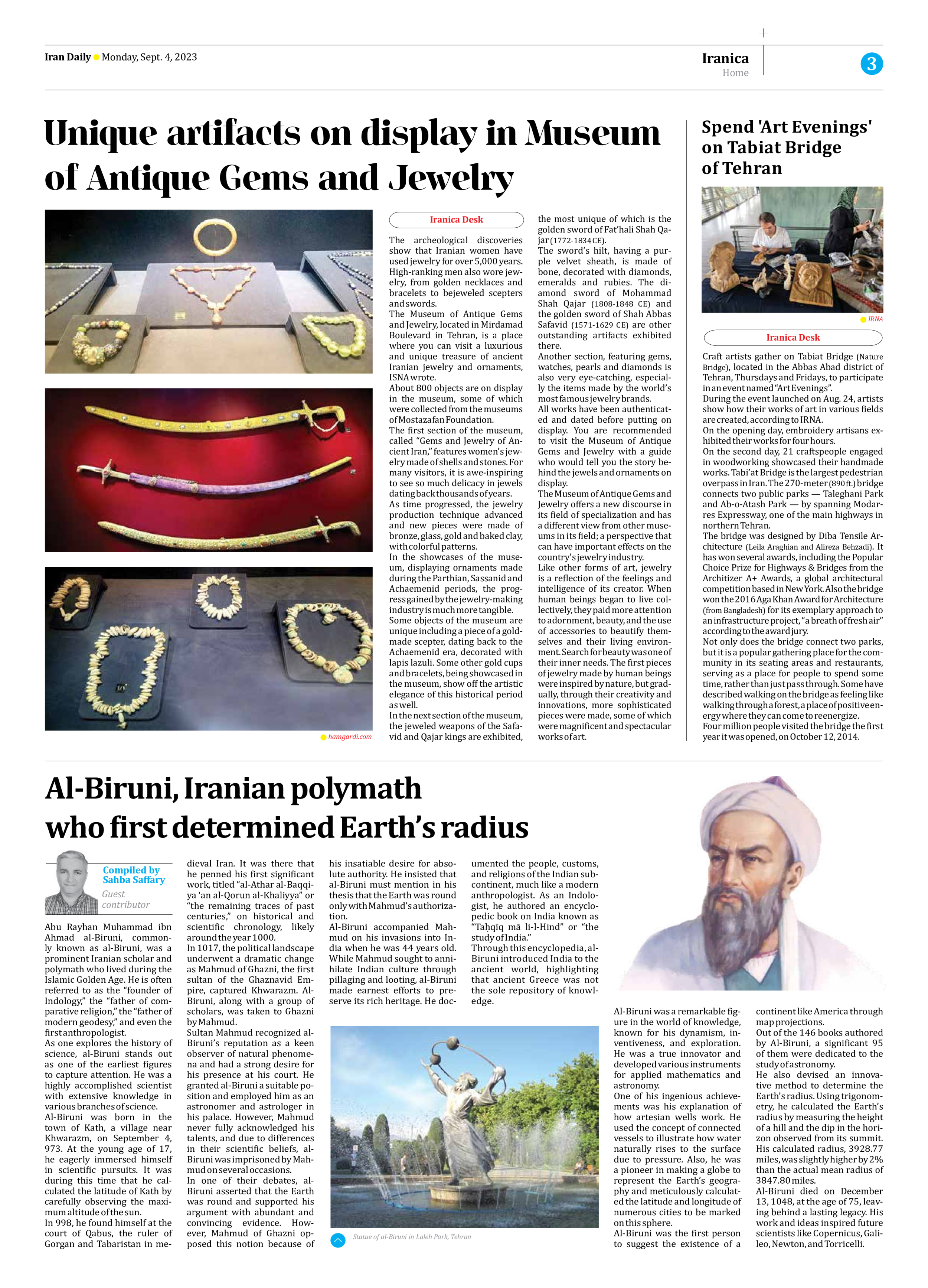
Al-Biruni, Iranian polymath who first determined Earth’s radius
Compiled by Sahba Saffary
Guest contributor
Abu Rayhan Muhammad ibn Ahmad al-Biruni, commonly known as al-Biruni, was a prominent Iranian scholar and polymath who lived during the Islamic Golden Age. He is often referred to as the “founder of Indology,” the “father of comparative religion,” the “father of modern geodesy,” and even the first anthropologist.
As one explores the history of science, al-Biruni stands out as one of the earliest figures to capture attention. He was a highly accomplished scientist with extensive knowledge in various branches of science.
Al-Biruni was born in the town of Kath, a village near Khwarazm, on September 4, 973. At the young age of 17, he eagerly immersed himself in scientific pursuits. It was during this time that he calculated the latitude of Kath by carefully observing the maximum altitude of the sun.
In 998, he found himself at the court of Qabus, the ruler of Gorgan and Tabaristan in medieval Iran. It was there that he penned his first significant work, titled “al-Athar al-Baqqiya ‘an al-Qorun al-Khaliyya” or “the remaining traces of past centuries,” on historical and scientific chronology, likely around the year 1000.
In 1017, the political landscape underwent a dramatic change as Mahmud of Ghazni, the first sultan of the Ghaznavid Empire, captured Khwarazm. Al-Biruni, along with a group of scholars, was taken to Ghazni by Mahmud.
Sultan Mahmud recognized al-Biruni’s reputation as a keen observer of natural phenomena and had a strong desire for his presence at his court. He granted al-Biruni a suitable position and employed him as an astronomer and astrologer in his palace. However, Mahmud never fully acknowledged his talents, and due to differences in their scientific beliefs, al-Biruni was imprisoned by Mahmud on several occasions.
In one of their debates, al-Biruni asserted that the Earth was round and supported his argument with abundant and convincing evidence. However, Mahmud of Ghazni opposed this notion because of his insatiable desire for absolute authority. He insisted that al-Biruni must mention in his thesis that the Earth was round only with Mahmud’s authorization.
Al-Biruni accompanied Mahmud on his invasions into India when he was 44 years old. While Mahmud sought to annihilate Indian culture through pillaging and looting, al-Biruni made earnest efforts to preserve its rich heritage. He documented the people, customs, and religions of the Indian subcontinent, much like a modern anthropologist. As an Indologist, he authored an encyclopedic book on India known as “Taḥqīq mā li-l-Hind” or “the study of India.”
Through this encyclopedia, al-Biruni introduced India to the ancient world, highlighting that ancient Greece was not the sole repository of knowledge.
Al-Biruni was a remarkable figure in the world of knowledge, known for his dynamism, inventiveness, and exploration. He was a true innovator and developed various instruments for applied mathematics and astronomy.
One of his ingenious achievements was his explanation of how artesian wells work. He used the concept of connected vessels to illustrate how water naturally rises to the surface due to pressure. Also, he was a pioneer in making a globe to represent the Earth’s geography and meticulously calculated the latitude and longitude of numerous cities to be marked on this sphere.
Al-Biruni was the first person to suggest the existence of a continent like America through map projections.
Out of the 146 books authored by Al-Biruni, a significant 95 of them were dedicated to the study of astronomy.
He also devised an innovative method to determine the Earth’s radius. Using trigonometry, he calculated the Earth’s radius by measuring the height of a hill and the dip in the horizon observed from its summit. His calculated radius, 3928.77 miles, was slightly higher by 2% than the actual mean radius of 3847.80 miles.
Al-Biruni died on December 13, 1048, at the age of 75, leaving behind a lasting legacy. His work and ideas inspired future scientists like Copernicus, Galileo, Newton, and Torricelli.







